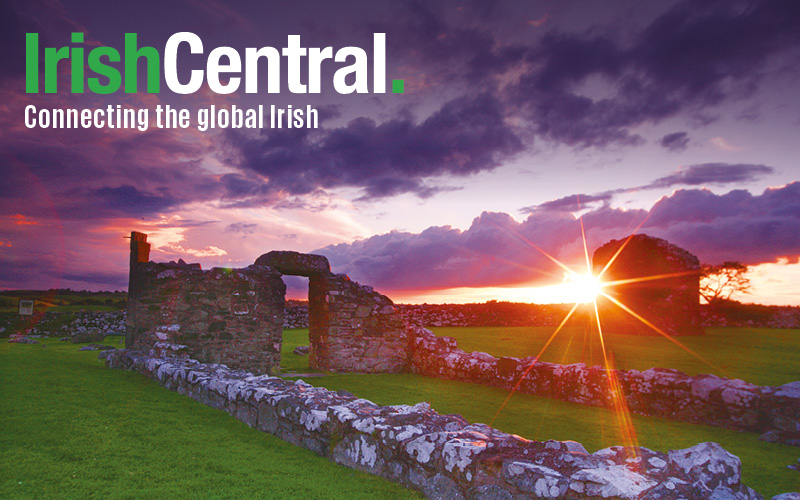Head outside of the hustle and bustle of urban centers like Dublin, Galway and Limerick and you'll find yourself treated to some of the most beautiful sights on earth, especially if you take the time to simply look up. It's something we don't seem to do nearly enough, and a truly dark night sky is one of the world's most overlooked – and quickly disappearing – resources.
While there are any number of places in rural Ireland that will, on a clear night, have even the most jaded person in awe of how many stars you really can see without the interference of the city lights, there's one place that the International Dark-Sky Association (IDA) has deemed worthy of a GOLD Tier designation: The Kerry International Dark-Sky Reserve.
The reserve sits on an isthmus in south-west Ireland, and it's pretty unique among the reserves. It's a living one, which means that not only can you visit, but you can stay there with all the comforts of a home away from home. The recognition only came with the support of a community that banded together to minimize light pollution where it occurred, and to protect the areas that are still as dark as they were when monks began building their refuge on Skellig Michael – which is also a part of the reserve.
There are nine separate areas included in the Core Zone and Buffer Zone for the reserve, all recognized as places you can go to see the night sky as the ancients did. Kells, Caherciveen, Portmagee, The Glen, Dromid, Valentia Island, Balinskeligs, Caherdaniel and Waterville boast some of the most stunning night skies in the world – along with modern amenities like B&Bs and a smattering of villages. About 4,000 people live in the zone that was recognized in January of 2014, an honor that came only after three years of hard work and campaigning by the Kerry Dark Sky Group.
Ireland has always been fiercely in touch with its ancient roots, and now the protection of the night sky is saving the sights that the ancients used as a guide to the building of the neolithic monuments that still stand today, 6,000-odd years after they were first erected. When the IDA made the Kerry Reserve's designation official, they acknowledged that the foundations of their darkness had incredibly tragic roots. During the Great Famine, countless families left their rural homes and headed to the cities, leaving the countryside barren and without the lights and industry that accounts for much of the world's light pollution.
We tend to hear all about air pollution and water pollution, but we hear less about light pollution. It's only in the past 100 years or so that we've lost something mankind has taken for granted for generations: the stars in the night sky. They were once navigational aids, they were used to help farmers keep track of when they needed to plant their crops, and they were the keepers of the stories. Heroes and gods of ancient myths and legends lived among the stars, in constellations that formed the basis for the stories told by bards and poets.
Once electric lights became more and more popular, light pollution began to fill the night sky with an artificial glow, rather than the sights of the stars. The International Dark-Sky Association is helping to not only preserve the truly dark locations that the world has left, but to educate communities on what they can do to lessen their own light pollution.
Light pollution is about more than just seeing the stars, too. According to the IDA, it increases our energy use, has a major, negative impact on human health and our ability to sleep, and hurts another of our valuable resources: our wildlife. Predators and prey alike rely on the darkness for hunting and for survival, and light pollution interrupts their ability to sleep, too. There are less obvious effects, too, as light pollution can interfere with nighttime breeding rituals for animals like frogs and toads, and can interfere with the migration schedule of birds.
Kerry's Dark Sky Reserve allows Irish wildlife to take full advantage of the darkness; along with the shelter of the bays, the vicinity of the Atlantic Ocean and the mild climate, it's a haven for countless animals who have the unique opportunity to live, breed and thrive like their ancestors did before we lit up the darkness. Pay close attention to the natural world, and you'll see grey seals, otters, fox, and even hedgehogs among the sheep, cattle and wild goats that dot the countryside. During the winter months, the Kerry area provides wintering grounds for half of the world's Greenland white-fronted geese, and the autumn months see migrating birds passing through on their way to warmer climates.
While the amateur star-gazer will be astonished by Kerry's night sky, the Kerry IDSR also offers some opportunities for guided tours and lectures under the moonlight, which can be arranged through the reserve's official website at kerrydarksky.com.
So what else can you see while you're there? There are the preserved tracks of prehistoric animals, vast sandy beaches, protected sea bird sanctuaries, dolphins in the nearby bays, sprawling lakes and winding rivers, and plenty of pubs to head to after a day's exploration.
Just don't forget to head out after dark, and don't forget to look up!
What do you think is Ireland's best kept travel secret? Send in your tips to [email protected]
---
Originally from Attica, NY Debra Kelly is a freelance writer and journalist who has seen most of the U.S. during her travels. Ready for something new, she's now living in the wild hills of Connemara with her husband and plenty of animals. She is a frequent contributor to Urban Ghosts, Listverse and Knowledgenuts. Read her IrishCentral article about moving from Buffalo to Connemara here.
*First published February 2016




Comments